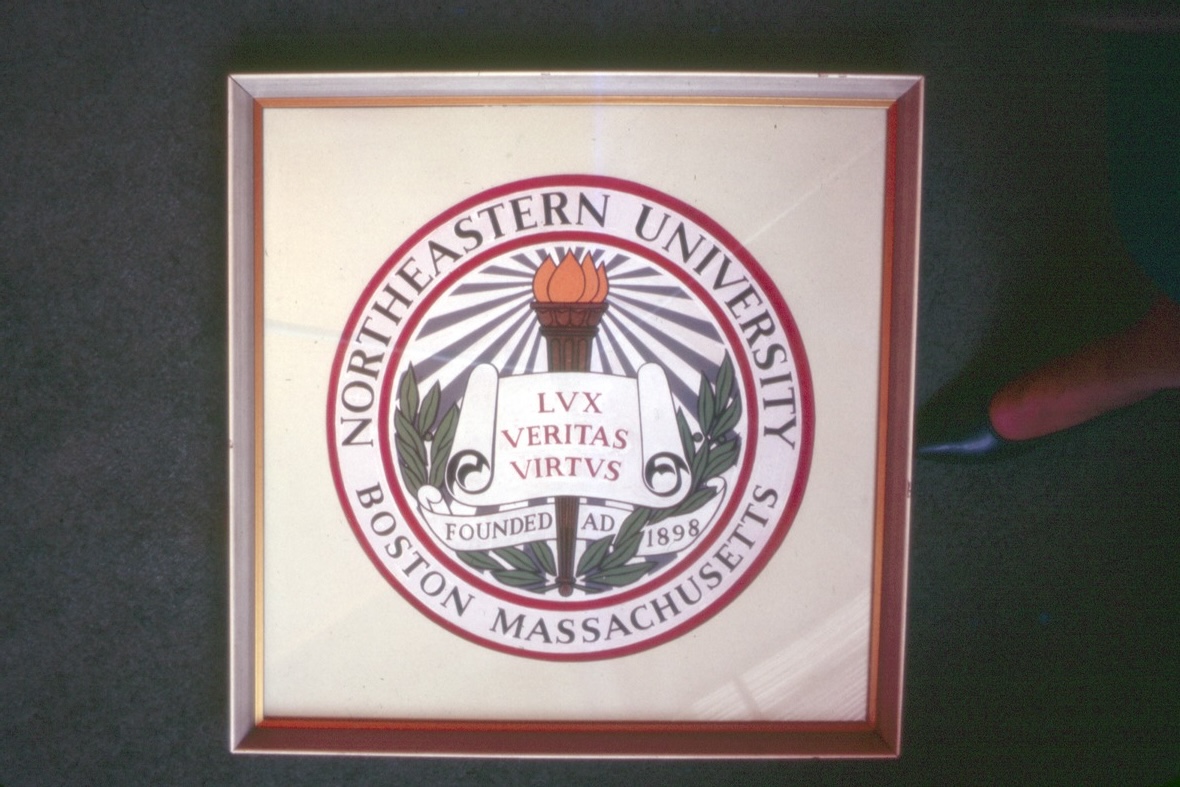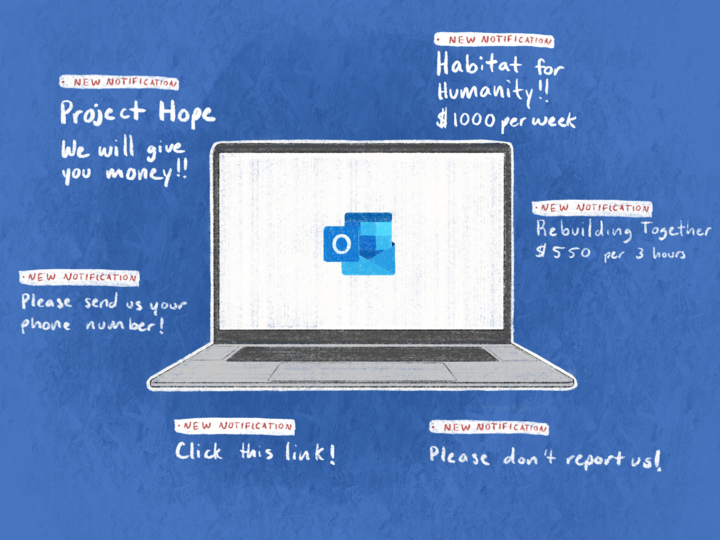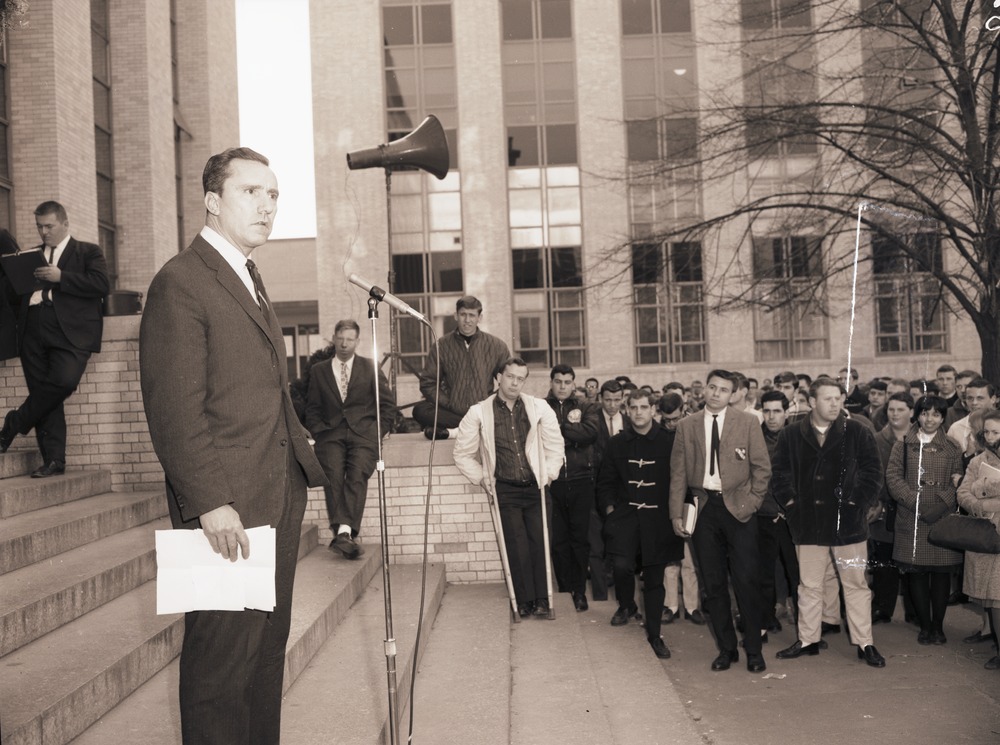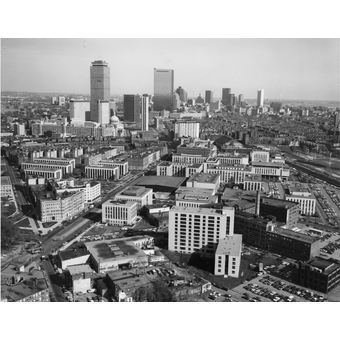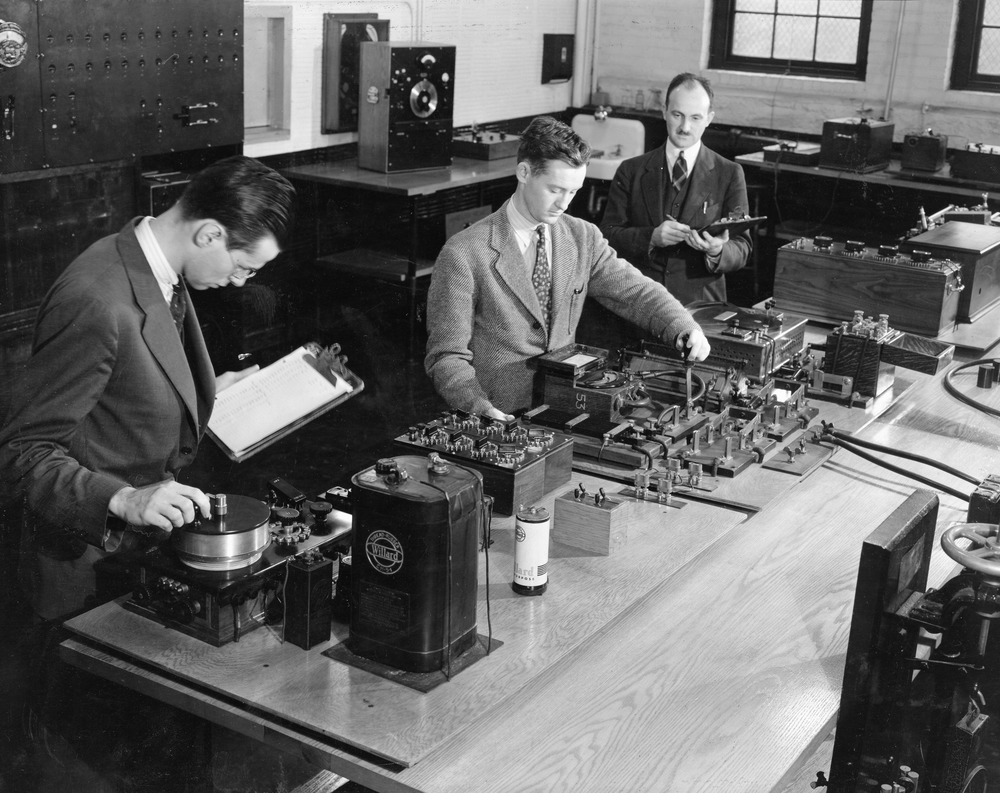Northeastern University’s Office of External Affairs has a succinctly stated goal on its website: to position the university as “the world leader in experiential learning and an engine for global impact.”
While the department, whose leader has touted it as “the best comms operation in higher ed” in an October 2024 email to The Huntington News, is currently home to a number of programs — including the university’s brand management, communications department, the Office of City and Community Engagement and Northeastern Global News — The News found through a review of archives dating back to 1958 that it took some time for the university to develop its full-fledged public relations, or PR, unit.
Until the 1900s, companies worldwide mainly used advertisements, pamphlets and propaganda as a form of public relations. As print newspapers became more widespread in the 18th and 19th centuries, businesses and organizations relied on the media to promote their products and ideas.
In the 1910s, companies began moving toward the modern practice of public relations, in which a business works to create a relationship with the general public. The first press release in the United States dates back to 1906, and the first PR departments were established soon after.
In the 20th century, the need for public relations in higher education became apparent as more universities were established and competition increased.
A 1958 memo from Northeastern’s public relations office found in Snell Library’s archives collection is the earliest document that explicitly lists what the department was responsible for. The memo, addressed to then-President Carl Ell, said the “function and duties of public relations” at Northeastern was to establish a press bureau and conduct bids on publications for advertisement, fundraising and annual reports.
The memo said the PR office was also responsible for coordinating events like commencement as well as assisting with general brand management duties.
Two years prior to that memo, however, Ell had been doing some brand management of his own.
In May 1956, Ell delivered an address at a Boston event hosted by The Newcomen Society, a nonprofit educational foundation, to describe the financial and physical growth of Northeastern he led through his presidency.
Ell said in his speech that the university had progressed from teaching classes in rented spaces to acquiring 11 buildings. He praised the university’s faculty and emphasized the success of the co-op program. At the end of his speech, he reflected on how important it was to preserve the quality of university education as the population of college students both in the United States and at Northeastern continued to increase.
Creating a department specifically focused on the university’s brand was important to Ell after witnessing this immense growth, The News found.
“We at Northeastern intend to continue an emphasis on both quantity and quality, serving primarily at the undergraduate level, for in doing so we believe we shall contribute most to the community and the Nation for which we are a part,” Ell told event attendees. “This does not necessarily mean that we shall double our present faculty or double our present facilities in order to accommodate twice as many students in our present programs in the decades ahead. Rather, it means that we shall be continually reviewing our operations with a view toward improving and modifying them as the situation demands and rendering the best possible service to the maximum number that the University can wisely accommodate.”
In 1959, Ell transferred power over the university to President Asa S. Knowles.
Knowles requested that Milton J. Schlagenhauf, a psychology professor at the university and Office of Public Relations associate, serve as coordinator of functions, despite his planned retirement that year.
“It would be very helpful to me in assuming my new duties as third President of the University, if you would postpone your plans for retirement one year and remain here in a special capacity at your present salary rate until June 30, 1960, when your retirement would become effective,” Knowles wrote in a letter to Schlagenhauf preserved in Northeastern’s archives collection.
He explained that as coordinator of functions, Schlagenhauf would be “continuing [his] present activities in arranging and directing meetings, functions and other official events of the University.”
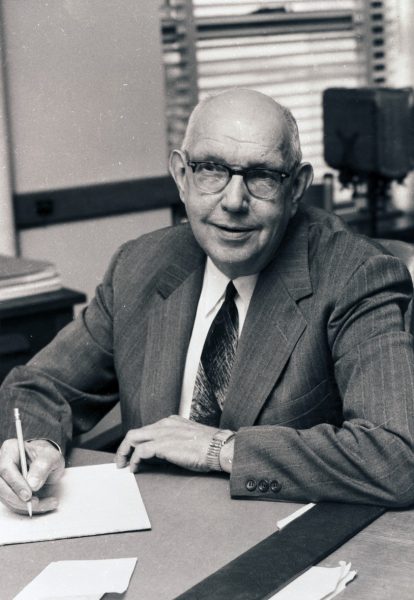
According to other archived Office of Public Relations documents, Schlagenhauf had already taken on many responsibilities that would be under the purview of the coordinator of functions, such as organizing a faculty dinner and recording items used for university events.
Schlagenhauf accepted the offer, writing to Knowles that “The conditions outlined in your letter of February 26, 1959, are agreeable to me, for I fully recognize the need of maintaining flexibility to meet future developments.”
The following year, Northeastern celebrated the 50th anniversary of its co-op program. For the anniversary, the university went all out on advertising, paying for features in the Boston Sunday Herald, the Boston Sunday Globe, the Boston Sunday Advertiser and the Christian Science Monitor.
These advertisements would cost around $30,000 if they all went to print, which would be around $322,000 today, according to figures in an archived memo. But the PR department’s suggested budget for the 1959-60 year only allowed for $8,500, or $92,000 today, to be spent on advertising, according to another archived document.
Throughout Knowles’ presidency, relations between the university and international entities expanded.
Michael Arnon, press and information counselor of the Embassy of Israel, reached out to Knowles in a July 1960 letter, offering to discuss with students “Israel’s foreign policy and various aspects of its life, such as its government education, culture, labor, agriculture, etc.” Arnon wrote that no fees would be involved in this arrangement.

“If an opportunity develops to invite one of your representatives to the University, we shall write to you at once,” Knowles wrote back in August 1960.
The university also hosted engineering students from Sweden in 1966, allowing them to mingle with Northeastern students. After visiting several large American engineering firms and plants across the country, the Swedes’ final destination before returning to Sweden was Boston.
Both American and Swedish students met in the student center for a conference.
“The four officers of the N.U. student chapter of the American Society of Mechanical Engineers will greet the Swedish students and speak briefly on the subject of school curriculum, co-operative work assignments in mechanical engineering, extra-curricular college life and the sights to be seen in Boston. They, in turn, would like a group of the Swedish boys to tell them something about their university, their type of study, college life in Sweden, etc.,” wrote foreign visitor coordinator Joy Viola in the event itinerary.
Throughout the 1960s, the university’s reach to potential students continued to grow.
One document The News found in archives, a “Statement Concerning Northeastern University and its Services to Youth, Adults, Business and Industry,” discussed how the university could use its resources to attract a “unique” clientele and highlight the co-op and graduate studies programs.

The university continued to create relationships with outside organizations, namely the National Association for the Advancement of Colored People, or NAACP, throughout the 20th century. A 1967 memo addressed to Dean John S. Bailey detailed Knowles’ agreement with an NAACP representative to sponsor an advertisement in an NAACP convention program.
A financial office record of the $500 allocation of the university’s budget toward this advertisement accompanied the memo.
Northeastern’s expanding public relations department mirrors the growth of PR in the country as a whole and the university’s own immense growth.
What began as a small two-page list of responsibilities at a commuter college expanded as the school gained more students, swallowed several other campuses and advertised to potential students around the world. In fall 2023, Northeastern was ranked within the top 20 universities with the highest number of international students.
Now, the university is getting more than advertisements published in newspapers — in August, both The Boston Globe and the Wall Street Journal published articles about Northeastern’s “reinvention” over the past several decades, calling the institution “elite” and “in demand.” Northeastern’s media relations department also runs its own media outlet, Northeastern Global News, which publishes frequently asked questions about prominent, controversial campus topics on behalf of the school.
Senior Vice President for External Affairs Michael Armini, the head of the university’s marketing and communications department, is one of the most senior members of President Joseph E. Aoun’s leadership team and advises the “president on a range of internal and external issues,” according to his biography. Armini told The News in an April interview that Aoun tasked him with managing Northeastern’s public-facing response to the Israel-Hamas war, which has put the university in national headlines several times throughout the past year.
The scale of Northeastern’s growth through the past century would not have been possible without the carefully crafted image that the university’s PR department has created.
Since its early days, the university has worked hard to put a positive image forward no matter what. Even almost 70 years ago, Ell said in his Newcomen address, “The present home of the University is an achievement (…) but behind the creation of this group of buildings lies a long history of problems, planning, preparation and growth.”





